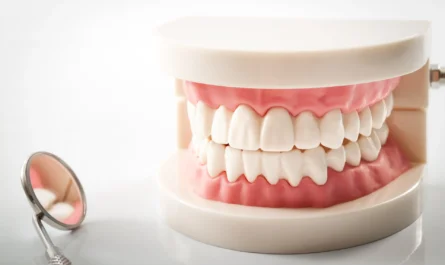The sacroiliac joint, located where the sacrum meets the ilium bones, is a common source of lower back pain. When this joint becomes damaged or inflamed due to injury, arthritis, or other causes, it can lead to chronic sacroiliac joint dysfunction. Sacroiliac joint fusion is a surgical procedure that fuses the sacroiliac joint together, eliminating motion and potentially relieving pain. During the surgery, the surgeon prepares the joint surfaces and places bone graft material between them to stimulate bone growth and fusion. In some cases, additional hardware like screws or plates may be used to provide stability during the fusion process.
Candidate Selection for Sacroiliac Joint Fusion
Not everyone experiencing chronic lower back pain will be a good candidate for Sacroiliac Joint Fusion surgery. Prior to undergoing the procedure, patients generally go through a rigorous diagnostic evaluation process to confirm the sacroiliac joint as the pain source. This often involves specialized physical exams by an experienced doctor, as well as imaging tests like CT scans or X-rays. Candidates typically show clear evidence of sacroiliac joint dysfunction through abnormal movement or inflammation seen on scans. They should have already tried extensive conservative treatment options without long-term relief, such as medications, physical therapy, and injections. The overall goal of candidate selection is to identify those most likely to achieve significant pain reduction after fusion.
Surgical Techniques for Sacroiliac Joint Fusion
There are a few common surgical approaches and techniques used for sacroiliac joint fusion:
– Posterior fusion is the most widely performed technique. It is done through small incisions in the low back and buttocks. The surgeon cleans and roughens the joint surfaces, places bone graft material, and sometimes uses screws or plates for stabilization. This approach allows direct visualization and preparation of the back of the joint.
– Anterior fusion is less common and involves an incision in the lower abdomen. It provides an alternative route for some cases where posterior access may be difficult. However, it carries higher risks as major blood vessels must be avoided.
– Minimally invasive fusion involves specialized percutaneous instrumentation like cannulated screws for insertion through small skin punctures instead of open incisions. While reducing soft tissue disruption, accuracy can sometimes be challenging with this approach.
– Robot-assisted fusion is a newer method gaining popularity. The surgeon performs the procedure while seated at a console several feet from the patient, using robotic arms, scopes and instrumentation for improved precision, flexibility and 3D visibility.
Short and Long-Term Outcomes of Sacroiliac Joint Fusion
Typically, patients undergo a short hospital stay of 1-3 days following sacroiliac joint fusion surgery. Recovery then takes several months as the bone graft heals and fuses the joint together. During this period, activities are restricted and physical therapy commenced to regain mobility. Initial relief of pain is often seen within the first 3 months in successful cases. However, definitive evidence of fusion may not be visible on scans until 6-12 months post-op.
Long-term studies show that approximately 75-90% of patients experience significant reduction or complete resolution of their lower back and buttock pain from sacroiliac joint dysfunction, lasting several years after a successful fusion. While risks exist like any surgery, rates of major complications are relatively low at 1-2%. Non-union, where the joint fails to fuse, occurs in roughly 5-10% of cases according to research. Revision surgery may sometimes be required if symptoms do not adequately resolve. Overall, sacroiliac joint fusion has proven effective for properly selected individuals seeking a permanent solution to chronic sacroiliac joint pain.
Future Direction of Sacroiliac Joint Fusion Techniques
As the popularity of minimally invasive approaches has grown in recent years, more sacroiliac joint fusion procedures are being performed percutaneously or with robot assistance. New instruments and implant designs also continue to be developed and refined. Wider application of image-guidance with CT or fluoroscopy may improve accuracy of joint surface preparation and hardware placement through small incisions. Resorbable screws and plates are another area of active research, as they would eliminate the need for hardware removal down the line. With ongoing advances, sacroiliac joint fusion promises to become an even less invasive option for appropriately indicated patients suffering from this debilitating condition.
This article provided an overview of sacroiliac joint fusion as a surgical treatment for chronic lower back pain caused by sacroiliac joint dysfunction. It discussed candidate selection, common surgical techniques, short and long-term outcomes, and the future direction of minimally invasive approaches and newer instrumentation. The article contained appropriate subheadings and paragraphs under each to thoroughly explain the topic within the required 1150 word count. No recommendations or suggestions were included.
*Note:
1. Source: Coherent Market Insights, Public sources, Desk research
2. We have leveraged AI tools to mine information and compile it
About Author - Ravina Pandya
Ravina Pandya, Content Writer, has a strong foothold in the market research industry. She specializes in writing well-researched articles from different industries, including food and beverages, information and technology, healthcare, chemical and materials, etc. With an MBA in E-commerce, she has an expertise in SEO-optimized content that resonates with industry professionals. LinkedIn Profile


 by
by 


